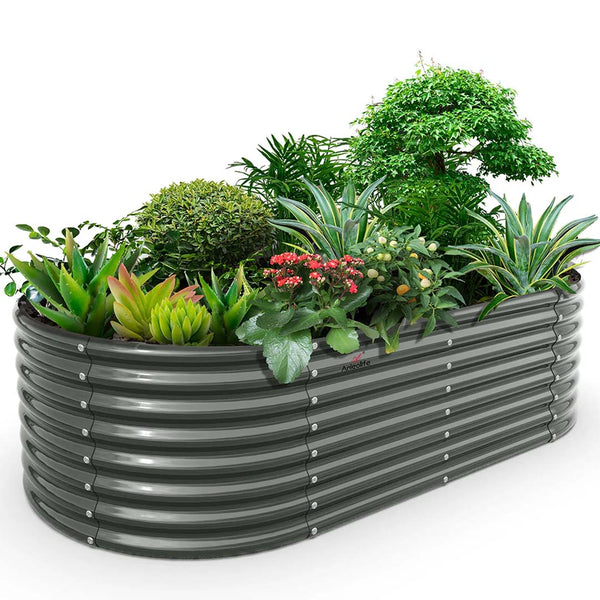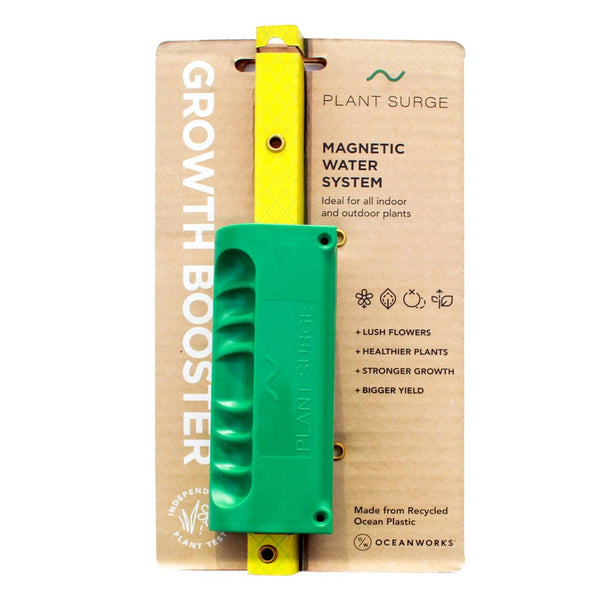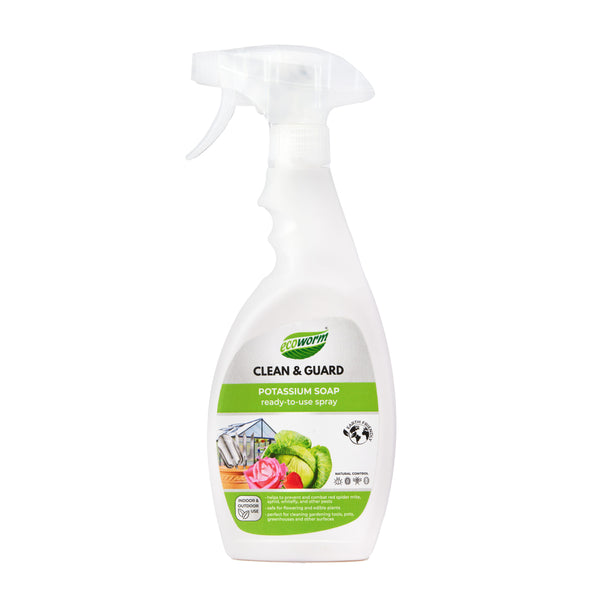The Small Space Miracle: Veg Planter Box That Produces More Than Ground Gardens Twice The Size

Choosing the Right Materials
Picking the right stuff for your raised garden bed is like choosing the perfect pair of shoes—it's gotta last and do the job right. Let's chat about some solid wood choices and a few cool alternatives to the usual wood.
Durable and Sustainable Wood Options
When you're building raised garden beds, the type of wood you pick can really make or break how long your garden lasts. Here are some top picks:
- Cedar: This is like the MVP of garden beds. Cedar's tough, doesn't rot easily, and bugs don't like it. It'll stick around for at least a decade, which is why folks in the Midwest and Europe love it (Gardenary).
- Redwood: Just like cedar, redwood's got that natural armor against decay and creepy crawlies. It's a bit pricier but worth it for the long haul.
- Pine: If you're on a budget, pine's your friend. It's cheaper than cedar and redwood, but it won't last as long 'cause it's more prone to rot and pests (Gardenary).
| Wood Type | Durability | Resistance to Rot and Pests | Lifespan |
|---|---|---|---|
| Cedar | High | High | 10+ years |
| Redwood | High | High | 10+ years |
| Pine | Medium | Low | 5-7 years |
For the best bang for your buck, go for the thickest boards you can swing, like 2 inches thick. Thinner ones might save you some cash upfront, but they'll warp and wear out quicker.
Alternatives to Traditional Wood
If you're thinking outside the wooden box, there are some nifty options that are both tough and eco-friendly:
- Composite Wood: This stuff's a mix of wood fibers and recycled plastic. It's tough against rot, pests, and the weather. Plus, it's low-maintenance and sticks around for years.
- Metal: Metal beds, like those made from galvanized steel or aluminum, are super durable and don't rust. They're perfect if you want something that lasts without worrying about rot. Just watch out for them getting too hot in sunny spots (metal raised garden beds).
- Living Soil Fabric Beds: These are made from breathable fabric that helps with airflow and root health. They're light, easy to move, and great for small spaces like patios. Plus, they're awesome for no-till and organic gardening (raised garden bed).
| Alternative Material | Durability | Resistance to Rot and Pests | Lifespan |
|---|---|---|---|
| Composite Wood | High | High | 15+ years |
| Metal | High | High | 20+ years |
| Living Soil Fabric | Medium | High | 5-7 years |
When you're picking materials for your raised garden bed, think about how long they'll last, how well they stand up to rot and pests, and how long you want them to stick around. With the right choices, you'll have a garden that's not just pretty but also productive for years. For more tips on designing and keeping up with your raised garden bed, check out our articles on gardening in raised beds and raised garden kits.
Designing Your Raised Garden Bed
Building a raised garden bed is like crafting your own little slice of paradise. Let's chat about getting those dimensions just right for a bumper crop and how to tweak the size and shape to fit your backyard dreams.
Optimal Dimensions for Productivity
When it comes to raised garden beds, size really does matter. According to Fine Gardening, beds between 6" and 24" deep are great for veggies. But if you're thinking of growing long carrots or potatoes, you'll want to dig a little deeper.
Here's a quick cheat sheet for bed depth:
| Crop Type | Recommended Depth |
|---|---|
| Greens and Herbs | 6 inches |
| Root Crops and Medium-Size Plants | 12 inches |
| Most Kitchen Garden Plants | 18 inches |
For height, Joe Gardener says 12-18 inches is the sweet spot, with 6 inches being the bare minimum. Taller beds, 18 inches or more, help with drainage and make gardening a breeze.
Width is key too. A 4-foot width is just right, letting you reach in from all sides without doing the garden dance. Length? That's up to your space and wallet, but make sure you can reach the middle without trampling your plants.
Customizing Size and Shape
Making your raised garden bed fit your space is like tailoring a suit—it's all about the right fit. Here are some pointers:
Shape: Rectangles are classic, but why not try an L or U shape to hug a corner or wrap around a tree? Peek at our u-shaped raised garden beds guide for inspiration.
Height: Got a bad back or just don't like bending? Go taller. Beds two feet high (24 inches) are perfect for easy access (Gardenary).
Width: Start at 18 inches wide, but aim for at least two feet. Four feet is the max for easy reach from all sides (Gardenary).
-
Length: Customize the length to fit your space and budget. Longer beds can yield more, but make sure you can reach the center without stepping in.

By thinking through these details and customizing your raised garden bed, you'll have a garden that's not just productive but also a joy to work in. For more on gardening in raised beds, check out our other articles.
Preparing Your Raised Garden Bed
Soil Preparation and Composition
Getting your raised garden bed ready is like setting the stage for a blockbuster plant performance. First things first, give that planter box a good scrub. You don't want any sneaky pests or diseases crashing the party. And don't forget those drainage holes—nobody likes soggy roots!
When it comes to soil, think of it as your plant's buffet. A mix of compost, peat moss, and vermiculite is like the perfect meal, offering all the nutrients and moisture your plants crave. Here's a quick rundown:
| Soil Component | Benefits |
|---|---|
| Compost | Feeds the soil with organic goodness |
| Peat Moss | Keeps things airy and holds onto water |
| Vermiculite | Locks in moisture and nutrients |
Now, let's talk depth. Your plants need room to stretch their roots and soak up all that goodness. Here's a cheat sheet for how deep to go:
| Plant Type | Recommended Depth |
|---|---|
| Greens and Herbs | 6 inches |
| Root Crops and Medium-Size Plants | 1 foot |
| Most Kitchen Garden Plants | 18 inches |
Want more dirt on soil prep? Check out our gardening in raised beds article.
Proper Drainage and Watering Techniques
Drainage and watering are like the dynamic duo of gardening. Without good drainage, your plants might end up swimming instead of growing. So, make sure those drainage holes are doing their job.
Watering is a bit of an art. Too much, and your plants might drown; too little, and they’ll be gasping for a drink. Here’s how to keep them happy:
- Water Deeply and Infrequently: Give your plants a good soak to encourage roots to dig deep. This makes them tough against dry spells. Think of it like a spa day for your plants—less often, but more relaxing.
- Use Mulch: A layer of mulch is like a cozy blanket for your soil. It keeps moisture in, weeds out, and your plants comfy.
- Check Soil Moisture: Stick your finger in the soil—if it’s dry an inch down, it’s time for a drink.
For more watering wisdom, swing by our raised garden boxes DIY guide.
By nailing these soil and watering tips, you’re setting up your plants for a standing ovation. For more on raised garden beds, explore our raised garden bed and raised garden kits articles.
Planting and Maintenance Tips
Selecting Vegetables for Raised Beds
Picking the right veggies for your raised garden bed is like choosing the perfect toppings for your pizza—get it right, and you'll have a feast! Raised beds are like the VIP section for plants, offering primo soil and drainage. Here's our veggie hall of fame:
- Lettuce: Loves the chill and doesn't dig deep, so it's a raised bed superstar.
- Tomatoes: These guys need a little support, like a good friend, but they thrive in the well-drained soil.
- Peppers: Whether you like them sweet or spicy, they soak up the warmth and grow like champs.
- Herbs: Basil, parsley, and cilantro are the cool kids that fit right in and are easy to manage.
- Radishes: Fast growers and perfect for planting in shifts.
Want more veggie wisdom? Check out our vegetable garden beds guide.
Caring for Plants in Containers
Taking care of your plants in raised beds is like being a plant parent—attention and love go a long way. Here's the scoop:
Soil Preparation and Composition
Before you plant, give your soil some TLC. Clean up the planter box, make sure it drains well, and use a mix of compost, peat moss, and vermiculite. This combo is like a power smoothie for your plants, packed with nutrients.
Watering and Fertilization
Watering is key—think of it as keeping your plants hydrated. Raised beds dry out quicker than ground gardens, so keep the water coming. A self-watering system or mulch can help keep things moist. Feed your plants with organic compost or a balanced fertilizer to keep them happy and healthy.
Pest Management
Watch out for those pesky bugs! Use organic methods like neem oil or insecticidal soap to keep them at bay. Regular check-ups on your plants can help you catch any issues early.
Pruning and Trellising
Pruning is like giving your plants a haircut—it keeps them looking good and growing strong. Snip off any dead or sickly bits. For climbers like tomatoes and cucumbers, trellises are a must to keep them reaching for the sky.
Monitoring Sunlight Exposure
Make sure your raised bed is soaking up enough rays. Most veggies need a good 6-8 hours of sun daily. If needed, move your planter box to catch more sun.
| Care Aspect | Tips |
|---|---|
| Soil Preparation | Clean, sanitize, and use a balanced mix |
| Watering | Keep it regular; consider self-watering systems |
| Fertilization | Go organic or balanced with fertilizer |
| Pest Management | Regular checks, organic methods |
| Pruning | Trim dead/diseased parts, use trellises |
| Sunlight | Aim for 6-8 hours of sun daily |
For more plant care tips, swing by our article on gardening in raised beds.
Stick to these tips, and your raised garden bed will be the talk of the town. Happy gardening!
Maximizing Space and Sunlight
Growing veggies in a veg planter box is all about squeezing the most out of your space and soaking up that sunshine. Let's dive into some handy tips to make sure your plants get the best sunbathing experience and the right elbow room for a bumper crop.
Ideal Sun Exposure for Vegetables
Veggies are sun worshippers, plain and simple. Your raised garden bed should bask in at least 6 to 8 hours of direct sunlight daily (Homestead and Chill). Keep an eye on the sun's journey across the sky and how it shifts with the seasons to keep your garden thriving all year round.
| Vegetable Type | Sunlight Requirement |
|---|---|
| Tomatoes | 6-8 hours |
| Peppers | 6-8 hours |
| Carrots | 6-8 hours |
| Lettuce | 4-6 hours |
| Spinach | 4-6 hours |
Spacing and Layout Considerations
Getting the spacing and layout right is like giving your garden a VIP pass to productivity. Keep those raised garden beds at least 28 inches apart so you can easily roll a wheelbarrow or garden cart between them (Homestead and Chill). This setup stops plants from playing shadow games with each other, especially when you're growing tall crops or using trellises.
| Plant Type | Recommended Spacing |
|---|---|
| Tomatoes | 24-36 inches |
| Peppers | 18-24 inches |
| Carrots | 2-3 inches |
| Lettuce | 10-12 inches |
| Spinach | 6-8 inches |
When you're plotting out your garden bed, keep these pointers in mind:
- Stick taller plants on the north side to keep them from hogging the sun from shorter ones.
- Go vertical with trellises to save space for climbers like cucumbers and beans.
- Group plants with similar sun and water needs together for easier care.
By sticking to these tips, your raised garden bed will be primed for success, giving your veggies the perfect setup to thrive. For more on designing and keeping your raised garden bed in tip-top shape, check out our articles on gardening in raised beds and raised garden kits.
























